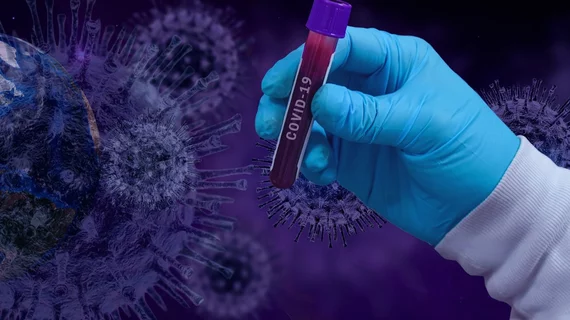Why COVID-19 is, in fact, a microvascular disease—and what that means for clinicians
COVID-19 has impacted patients in numerous ways, making it difficult at times to properly diagnose and treat. According to a new analysis in Circulation, one key detail that cardiologists and other clinicians should keep in mind is the consistent damage it does to patients’ blood vessels. Perhaps, the authors argue, we should view COVID-19 as a microvascular disease.
“Although most patients with COVID-19 present with a mild upper respiratory tract infection and then recover, some infected patients develop pneumonia, acute respiratory distress syndrome, multiorgan failure and death,” wrote co-authors Charles J. Lowenstein, MD, of Johns Hopkins University School of Medicine in Baltimore, and Scott D. Solomon, MD, of Brigham and Women’s Hospital in Boston. “Clues to the pathogenesis of severe COVID-19 may lie in the systemic inflammation and thrombosis observed in infected patients. We propose that severe COVID-19 is a microvascular disease in which coronavirus infection activates endothelial cells, triggering exocytosis, a rapid vascular response that drives microvascular inflammation and thrombosis.”
Venous thromboembolism (VTE) and arterial thromboembolism have both been identified as significant side effects of severe COVID-19, the authors noted, with VTE impacting up to 35% of all COVID patients admitted to the ICU. Severe infections have also been associated with “laboratory findings consistent with a hypercoagulable state,” and patients entering “a hyper-inflammatory state.”
The combination of inflammation and thrombosis is crucial, suggesting that endothelial dysfunction could be at the heart of this complex infection. SARS-CoV-2, the virus behind COVID-19, appears to activate exocytosis “by binding to an endothelial surface receptor such as ACE2,” Lowenstein and Solomon wrote. Other possibilities mentioned in the analysis are that SARS-CoV-2 activates exocytosis indirectly by activating “host responses and a plethora of cytokines” or that it simply infects endothelial cells directly.
Autopsies of COVID-19 patients—and the elevated levels of both VWF and P-selectin observed in patients with severe infections—appear to back up this train of thought. And by approaching the once-in-a-generation pandemic from this angle, it may be possible to consider some new treatment possibilities that could help the clinicians who are still battling COVID-19 around the clock.
“Inhibitors of endothelial exocytosis may represent a novel therapeutic approach to the vasculopathy of COVID-19,” the two authors wrote. “Inhibition of P-selectin would block part of the pathway downstream of endothelial injury, including leukocyte rolling and platelet adherence to the vessel wall. Compounds that target the interaction of P-selectin with its ligand P-Selectin Glycoprotein Ligand 1 include small molecules, aptamers, ligand decoys and antibodies.”
Clinical trials would be needed to test any new treatment options, they added. And Lowenstein is actually the principal investigator of a trial focused on “the safety and efficacy of a P-selectin inhibitor in patients with COVID-19.”
“Accumulating clinical, laboratory, and autopsy evidence suggests that endothelial exocytosis plays a central role in the pathogenesis of severe COVID-19,” the duo concluded. “Endothelial release of P-selectin and VWF activate two parallel pathways, leukocyte adherence and platelet aggregation, that lead to the cytokine storm and massive thrombosis that are characteristic of severe COVID-19.”
The full analysis from Lowenstein and Solomon can be read here. Their work was funded in part by the National Institutes of Health National Heart Lung and Blood Institute.

